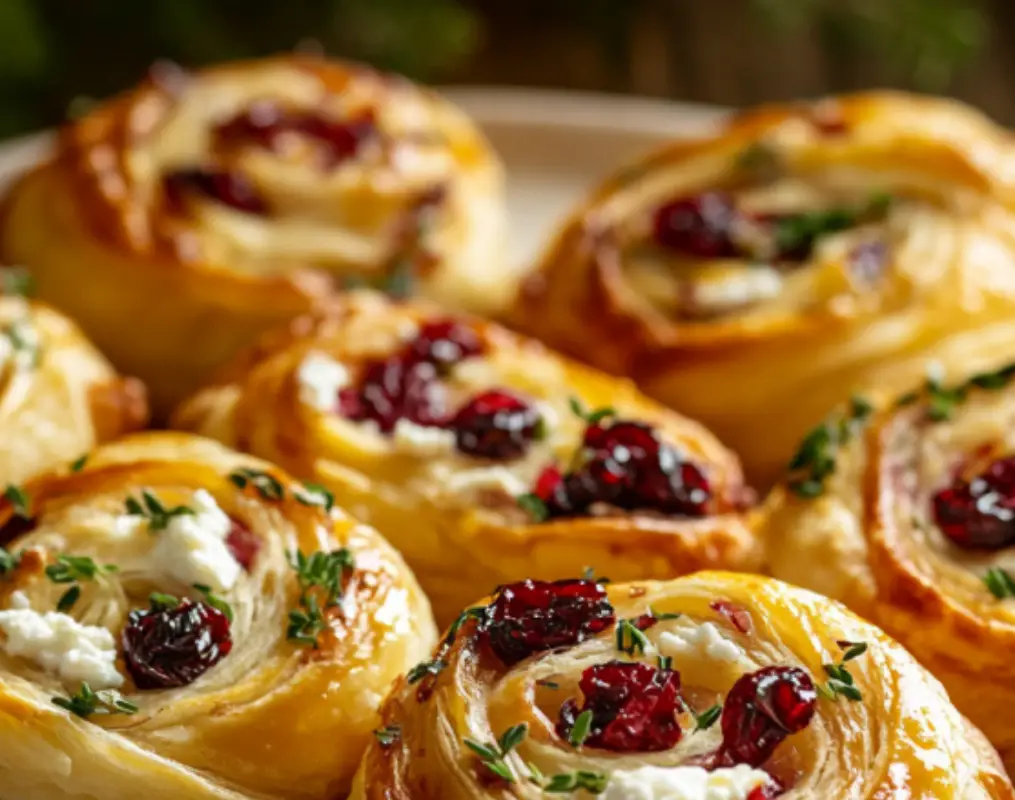Puff pastry is a light, flaky, and buttery dough used to create a variety of sweet and savory pastries. Its delicate, crisp layers are formed by repeatedly folding and rolling dough with butter, resulting in a tender texture that melts in the mouth. Puff pastry is a fundamental component in many classic recipes, from croissants and tarts to savory turnovers and appetizers.
Why You’ll Love This Recipe
Puff pastry is incredibly versatile and can be used in countless dishes, both sweet and savory. Whether you are making elegant desserts or hearty snacks, puff pastry delivers a professional-quality texture that is sure to impress. While making it from scratch requires time and technique, the results are unparalleled: buttery, flaky layers that offer a perfect combination of tenderness and crispness.
Ingredients
(Tip: You can find the complete list of ingredients and their measurements in the recipe card below.)
- All-purpose flour
- Unsalted butter (very cold)
- Ice water
- Salt
- Lemon juice or vinegar (optional, to help tenderize the dough)
Directions
- In a large bowl, combine the flour and salt.
- Cut the cold butter into small cubes and toss it into the flour mixture, keeping some larger chunks intact.
- Gradually add ice water and mix gently just until a shaggy dough forms.
- Turn the dough out onto a floured surface and shape it into a rectangle.
- Roll out the dough into a larger rectangle, then fold it into thirds like a letter.
- Rotate the dough 90 degrees, roll it out again, and fold it into thirds once more.
- Repeat the rolling and folding process 5–6 times, chilling the dough in the refrigerator for 30 minutes between every 2 turns to keep the butter firm.
- After the final fold, chill the dough for at least 1 hour before using.
- Roll out as needed for recipes, being careful not to overwork.
Servings and Timing
This recipe makes enough puff pastry for approximately two standard-sized tarts or several turnovers, serving about 6–8 people. The preparation time is around 1 hour (active time), plus 3–4 hours of chilling and resting.
Variations
- Rough Puff Pastry: A quicker method that involves less precise folding but still delivers flaky results.
- Whole Wheat Puff Pastry: Substitute half the all-purpose flour with whole wheat flour for a nutty flavor.
- Herb-Infused Puff Pastry: Add finely chopped herbs like rosemary or thyme to the dough for savory recipes.
- Cheese Puff Pastry: Sprinkle finely grated Parmesan or cheddar between layers during folding.
- Sweet Puff Pastry: Add a tablespoon of sugar to the dough for sweet pastries.
Storage/Reheating
Wrap uncooked puff pastry tightly in plastic wrap and refrigerate for up to 3 days or freeze for up to 2 months.
To use frozen puff pastry, thaw it overnight in the refrigerator before rolling out.
Once baked, puff pastry is best eaten fresh. However, you can reheat it in a 350°F (175°C) oven for 5–10 minutes to refresh the crispness.
FAQs
Can I use salted butter instead of unsalted butter?
Yes, but reduce or omit the additional salt in the dough to balance the flavor.
Why is it important to keep everything cold?
Keeping the butter and dough cold ensures that distinct layers form during baking, creating the desired flakiness.
How thin should I roll puff pastry before baking?
Generally, puff pastry should be rolled to about 1/8 inch thick unless a specific recipe states otherwise.
Can I freeze homemade puff pastry?
Yes, wrap it tightly and freeze it for up to 2 months. Thaw in the refrigerator before using.
How do I prevent puff pastry from shrinking during baking?
Chill the shaped pastry before baking and avoid stretching the dough too much when rolling it out.
What is the best way to bake puff pastry?
Bake in a hot oven (400°F to 425°F) to ensure rapid steam formation, which creates the signature layers.
Can I make a vegan version of puff pastry?
Yes, use a high-fat vegan butter substitute to achieve similar results.
How do I get a golden color on puff pastry?
Brush the pastry lightly with an egg wash (beaten egg with a little water) before baking.
Why is my puff pastry not rising properly?
It may be due to the butter melting before baking or the oven not being hot enough when the pastry is placed inside.
What types of recipes can I make with puff pastry?
Puff pastry is perfect for tarts, turnovers, palmiers, vol-au-vents, sausage rolls, and mille-feuille.
Conclusion
Puff pastry is a timeless, essential dough that brings luxurious texture and flavor to a wide variety of dishes. Though it requires patience and technique, the reward of homemade, buttery, flaky pastry is unmatched. Once mastered, puff pastry opens the door to countless delicious creations, making it an invaluable skill for any home baker or chef.
Print
- Prep Time: 30 minutes
- Total Time: 1 hour 30 minutes
- Yield: About 1 1/2 pounds of pastry dough
- Category: Baking, Pastry
Description
Flaky, buttery, and beautifully layered, this Homemade Puff Pastry recipe is a game-changer! Whether you use it for sweet pastries, savory appetizers, or elegant desserts, learning how to make puff pastry from scratch will elevate all your baking creations.
Ingredients
-
2 1/2 cups all-purpose flour
-
1 teaspoon salt
-
1 cup unsalted butter, cold and cut into cubes
-
2/3 cup ice water (plus more if needed)
-
Extra flour for rolling
Instructions
-
In a large bowl, whisk together the flour and salt.
-
Add the cold butter cubes and toss to coat.
-
Using a pastry cutter or your hands, cut the butter into the flour until pea-sized pieces remain.
-
Slowly add the ice water and mix just until the dough comes together (it should be shaggy).
Notes
-
Keep everything cold! Cold butter creates flaky layers when baked.
-
You can freeze puff pastry for up to 2 months; thaw overnight in the fridge before using.
-
This shortcut version of puff pastry is often called “rough puff” and is easier than traditional methods.


Awesome https://is.gd/N1ikS2
Awesome https://shorturl.fm/oYjg5
Good partner program https://shorturl.fm/N6nl1